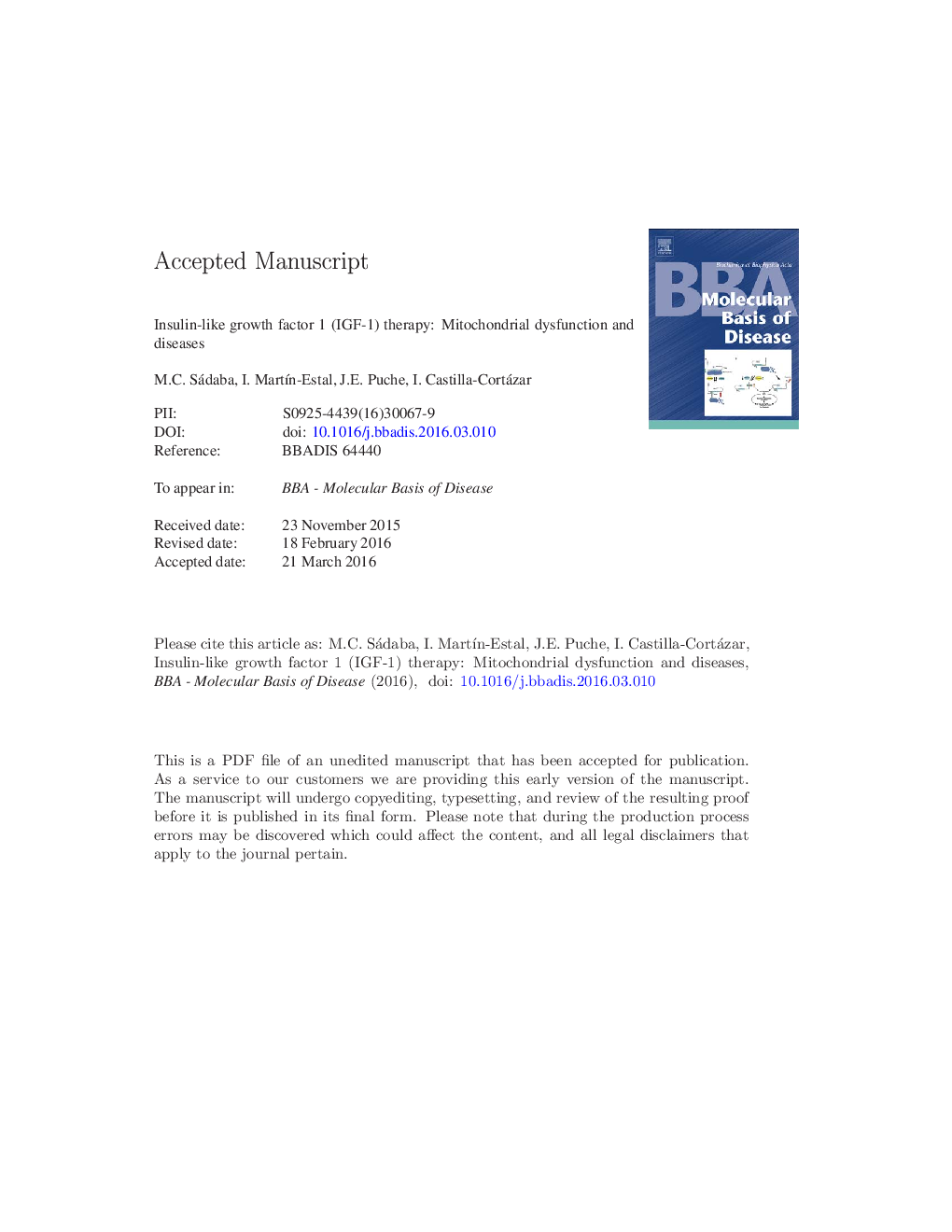| Article ID | Journal | Published Year | Pages | File Type |
|---|---|---|---|---|
| 8259189 | Biochimica et Biophysica Acta (BBA) - Molecular Basis of Disease | 2016 | 40 Pages |
Abstract
This review resumes the association between mitochondrial function and diseases, especially neurodegenerative diseases. Additionally, it summarizes the major role of IGF-1 as a mitochondrial protector, as studied in several experimental models (cirrhosis, aging â¦). The contribution of mitochondrial dysfunction to impairments in insulin metabolic signaling is also suggested by gene array analysis showing that reductions in gene expression, that regulates mitochondrial ATP production, are associated with insulin resistance and type 2 diabetes mellitus. Moreover, reductions in oxidative capacity of mitochondrial electron transport chain are manifested in obese, insulin-resistant and diabetic patients. Genetic and environmental factors, oxidative stress, and alterations in mitochondrial biogenesis can adversely affect mitochondrial function, leading to insulin resistance and several pathological conditions, such as type 2 diabetes. Finally, it remains essential to know the exact mechanisms involved in mitochondrial generation and metabolism, mitophagy, apoptosis, and oxidative stress to establish new targets in order to develop potentially effective therapies. One of the newest targets to recover mitochondrial dysfunction could be the administration of IGF-1 at low doses. In the last years, it has been observed that IGF-1 therapy has several beneficial effects: restores physiological IGF-1 levels; improves insulin resistance and lipid metabolism; exerts mitochondrial protection; and has hepatoprotective, neuroprotective, antioxidant and antifibrogenic effects. In consequence, treatment of mitochondrial dysfunctions with low doses of IGF-1 could be a powerful and useful effective therapy to restore normal mitochondrial functions.
Keywords
TFAMPPAReNOSGHRIGF-1LRRK2GLT-1ΔΨmDJ-1PGC-1αcAMP response-element binding proteinSNCACREBVDACToMIGF-2TIMAtg proteinsMNGIEperoxisome proliferator-activated receptor γ coactivator 1αCaMKsubisemiquinoneMF2OXPHOSPI3KFMNFADH2AMPKCDKsMitochondrial DNAPTEN-induced putative kinase 1ROSUCPsAdenosine TriphosphateATPtranslocase of the outer membranetranslocase of the inner membraneMitochondrial Neurogastrointestinal Encephalomyopathyinsulin-like growth factor-1Alzheimer's diseaseMitochondrial diseasesNeurodegenerative diseasesParkinson's diseaseOxidative stressleucine-rich repeat kinase 2Uncoupling proteinsCNSmtDNAFree radicalsPINKRespiratory chainAgingSODHuman umbilical vein endothelial cellsendothelial nitric oxide synthaseSuperoxide dismutaseHepatic cirrhosiscentral nervous systemmyocyte enhancer factor-2mitochondrial transcription factor AInsulin-like growth factor-2Oxidative phosphorylationphosphoinositide 3-kinaseflavin mononucleotideflavin adenine nucleotideMultiple sclerosisMitochondriaNADHknock-outnicotine adenine dinucleotideGrowth hormoneParkinMembrane potentialAutophagy-related proteinsvoltage-dependent anion-selective channelcyclin-dependent kinasesglutamate transporter-1Reactive oxygen speciesPeroxisome proliferator activated receptorgrowth hormone receptor
Related Topics
Life Sciences
Biochemistry, Genetics and Molecular Biology
Ageing
Authors
M.C. Sádaba, I. MartÃn-Estal, J.E. Puche, I. Castilla-Cortázar,
